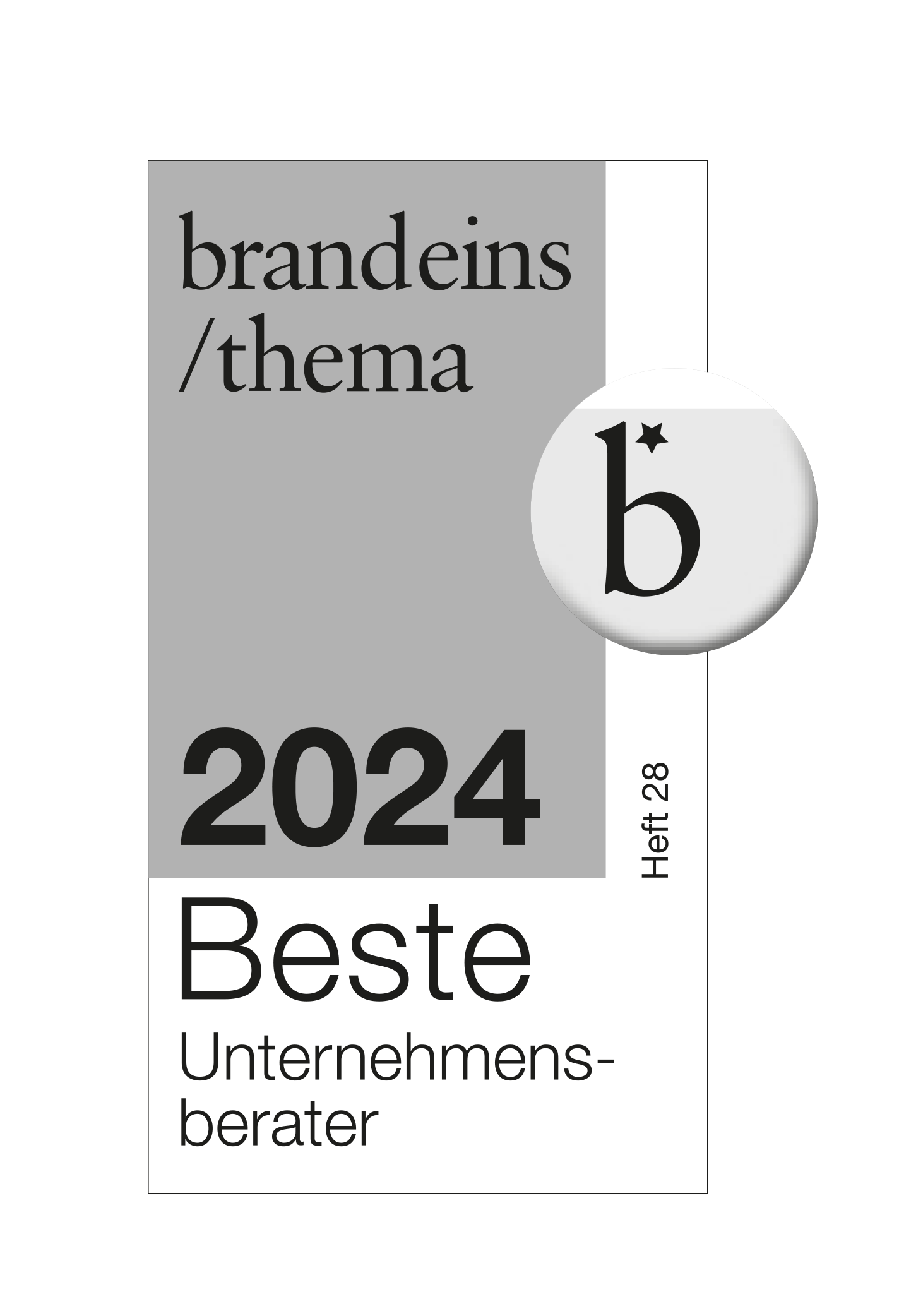What are the benefits of implementing SAP S/4HANA and using SAP Business Planning and Consolidation (BPC) for integrated business planning?
An assessment by our expert Dr. Oliver Schöb, management consultant msg treorbis GmbH.
Read Part 1 of the article series
In the following, we will use a simple numerical example to explain how the plan P&L can be generated automatically with BPC for SAP S/4HANA. We follow the planning process shown, but will not describe all planning steps in detail. We will be guided by the planning process shown, but will not describe all planning steps in detail
(1) Sales/turnover planning
Sales/turnover planning is the starting point for operational planning. There are many alternatives for this planning step: It is possible to plan sales volumes and sales turnover per customer and item as well as to plan sales volumes and sales turnover for customer and item groups. When planning is started on the specified aggregation levels, the plan data is often broken down to items and customer with a top-down distribution. This is always necessary when a valuation of the sales quantities with the calculated costs of goods manufactured of the items is to be done at a later stage. In addition, the plan value for sales turnover can be calculated in different ways: direct planning of net turnover or planning of gross turnover and sales reductions. Regardless of which alternative is chosen, there has long been a comprehensive range of planning layouts and planning functions for this planning step.
What is new now with SAP S/4HANA, thanks to the use of the universal ledger, is that the result of this planning step can be used both for contribution margin accounting and for P&L . Gone are the days when, due to the different data structure between FI and CO, you had to transfer the planned values of the value fields to planned values for G/L accounts with a lot of additional effort.
(2) Planning production input
The business content of BPC contains a planning function “Calculation of Production Costs“ . Reminiscent of the familiar planning functions in the ERP environment, one might expect that when this planning function is executed, the costs of goods manufactured of the quantity sold are generated for contribution margin accounting. But this is not the case. The costs for the consumption of raw materials, internal activities and external activities are calculated. So it's about the production input . At this stage, we are not yet concerned with the costs, but rather on the consumption quantities of the input materials and the required production times . The calculation of these consumption quantities and times is done by accessing the sales quantities of the items planned in step (1), which are valuated with the standard price calculations of the items. Any intermediate levels (semi-finished products) are completely exploded.
Until now, there was no comparable planning function.. In costing-based profitability analysis, it was possible to calculate the plan operating level of the cost centers based on sales quantity planning, but it was not possible to calculate plan values for raw material consumption with the SAP standard.
Thanks to the new planning function, the plan operating level of the cost centers is automatically calculated. In addition, the purchasing department receives a list of the planned raw material quantities, which certainly improves the accuracy of the plan values for the purchase prices.
It should be briefly noted that the plan costs, calculated in this planning step, must not be used either for plan P&L or plan contribution margin accounting because the costs calculated at this point still access old plan prices and old purchase prices This can be ensured with appropriate settings for the planning function.
(3) Cost center planning
We will not go into the details of cost center planning at this point. As already mentioned, planning step (2) provides the plan operating level for all cost centers, which significantly improves the accuracy of the plan costs. (Previously, projected actual values or estimated values were very often used to calculate the plan operating level).
As before, the results of cost center planning are the plan prices for production hours (and other activity types), the % values for allocating material overheads (and possibly production overheads) and the plan costs for each cost element (and/or G/L account). The plan costs for primary cost elements are automatically shown in the plan P&L . However, they are not shown in plan contribution margin accounting, as we might erroneously assume if we take the term "accounting-based profitability analysis" too literally.
(4) Calculation of costs of goods manufactured of items
After determining the plan prices and % values for overhead accounting (in planning step (3)) and the planning of future expected purchase prices and updating the BOMs and routings, all preliminary work required for costing has been completed. The costing run to determine the future costs of goods manufactured of the items (standard prices) is carried out as before in the ERP system without support from BPC. The costs of goods manufactured (and/or their itemization) determined with this planning step are used as the input for the calculation of costs of goods manufactured of the sold quantity in the subsequent planning step.
(5) Calculation of costs of goods manufactured of the quantity sold
This planning step starts with the renewed execution of the planning function “Calculation of Production Costs” While planning step (2) was about the consumption quantities, we are now interested in the plan costs. Here, we are only dealing with the plan costs for raw material consumption (and external activities). This values are required for the plan P&L . The secondary costs shown are not required for the plan P&L. The transfer of plan costs for the secondary cost elements (cost elements 9411 and 9431 in the example) must be prevented by settings in the planning function.
In the meantime, we have already received a lot of data for the plan P&L, but it still looks very empty in our plan contribution margin accounting. As mentioned above, the accounting-based profitability analysis does not automatically show all the data that is displayed in P&L. This applies to both plan costs and actual costs. An orientation to the value flow in actual makes it easier to understand the procedure for generating plan data. The figure below outlines this value flow (creation of the item by a production order with subsequent goods issue to the customer for an SD order item).
Looking at the planning steps that have already been successfully completed, we can state that we have mapped the situation on the cost centers and production orders using the planned costs that have been determined. We did not have to generate any production orders for this. We can also dispense with the consideration of stock receipt and issue postings for the finished goods in the planning. To show the plan costs of goods manufactured in contribution margin accounting , we only required plan values for “special” stock change accounts . These are the accounts that are created in in actual when the goods are issued by a transfer posting from the original stock change account (accounts 9010, 9011 and 9012 (blue color in the figure)).
The costs of goods manufactured of the quantity sold were already determined using the planning function “Calculation of Production Costs” . However, the itemization shows the plan values for the "input" accounts for each item. But only the plan values for the “special” stock change accounts are required. Unfortunately, there is no predefined planning function for this in the Business Content. At this point, a planning function is used for which a Fox formula has been defined. Fortunately, extensive programming knowledge is not required for this. The figure below shows the result of this planning function for our example.
(6) Cost center credit production and material area
For cost centers, whose planning costs are partially or completely included in the costs of goods manufactured (by allocating production hours, manufacturing overheads, etc.), of course only the over-/underabsorption of the planned costs may be settled. In our numerical example, a 100% allocation of planned costs was carried out in planning step (5) (see Fig. 10), so that no values now arise in the plan contribution margin accounting when these cost centers are settled.
(7) Cost center credit administration and distribution
For cost centers, whose plan costs are not part of the costs of goods manufactured, the total plan costs must be transferred to contribution margin accounting. At present, there are no assessment cycles for this (Note: The previously used assessment cycles in the ERP system do not generate plan values for the table ACDOCP (“Universal Ledger“)). A fox formula can be used as an alternative. Figure 11 shows the result of executing this planning function.
(8) Summary
After performing planning steps (1)-(7), the target has been achieved: All plan values have been generated for plan P&L and plan contribution margin accounting and match the displayed operating profit . For the execution of the planning steps, some very useful planning functions are delivered in the business content of BPC. By additionally creating some fox formulas, an automated linking of subplans can be achieved. Thanks to the use of the universal ledger (table ACDOCP) for storing the plan data, plan P&L creation can be done without an additional planning step; it takes place in parallel with the creation of the plan contribution margin accounting.


